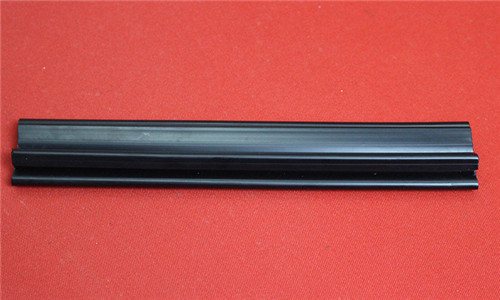
Phone Number :
07 28, 2023

Child safety is a paramount concern for parents and guardians around the world. With the growing awareness of potential hazards, various safety measures have been implemented to protect children from accidents and injuries. One such measure is the use of anti-collision strips, which play a crucial role in ensuring the safety of children in different environments.
Anti-collision strips are designed to provide a protective barrier between children and potentially harmful surfaces or objects. These strips are commonly used in various settings, including homes, schools, playgrounds, and public areas. Their primary function is to prevent accidental collisions, thereby reducing the risk of injuries that children may sustain in their everyday activities.
One of the key roles of anti-collision strips is to absorb impact and distribute energy. By doing so, these strips can minimize the force exerted on a child's body during a collision. This feature is particularly important in areas where children engage in physical activities or where there is a risk of falling, such as near stairs, sharp corners, or furniture edges.
Furthermore, anti-collision strips contribute to creating a safe environment for children by reducing the likelihood of accidents. The brightly colored strips serve as a visual cue, attracting children's attention and making them aware of potential dangers. They act as a reminder for children to be cautious and to navigate their surroundings with care.
To ensure the effectiveness and reliability of anti-collision strips, certain standard specifications need to be followed during their design and installation. These standards are crucial in guaranteeing the overall safety of children.
Firstly, the materials used for anti-collision strips should be of high quality and capable of withstanding frequent impact. These materials must be durable, non-toxic, and resistant to wear and tear. Polyurethane foam, rubber, or silicone are commonly used materials that meet these requirements.
Secondly, the dimensions and thickness of the anti-collision strips should comply with industry standards. The strips need to be wide enough to provide adequate coverage and cushioning, while the thickness must be sufficient to absorb impact forces effectively. Additionally, installation instructions should be provided by manufacturers to ensure proper fitting.
Lastly, adherence to safety regulations and guidelines is essential. Anti-collision strips should undergo rigorous testing to ensure their reliability and compliance with safety standards. These tests involve checking the strips' impact resistance, fire resistance, and overall durability. Manufacturers should also provide clear instructions for proper maintenance and replacement of the strips.
With their ability to absorb impact and prevent accidents, anti-collision strips make a significant contribution to child safety. By following standard specifications and guidelines, these strips can effectively protect children from potential harm in various settings. It is imperative for parents, educators, and authorities to recognize their role and ensure their correct installation and maintenance. Together, we can create a safer environment for children and reduce the risk of injuries.